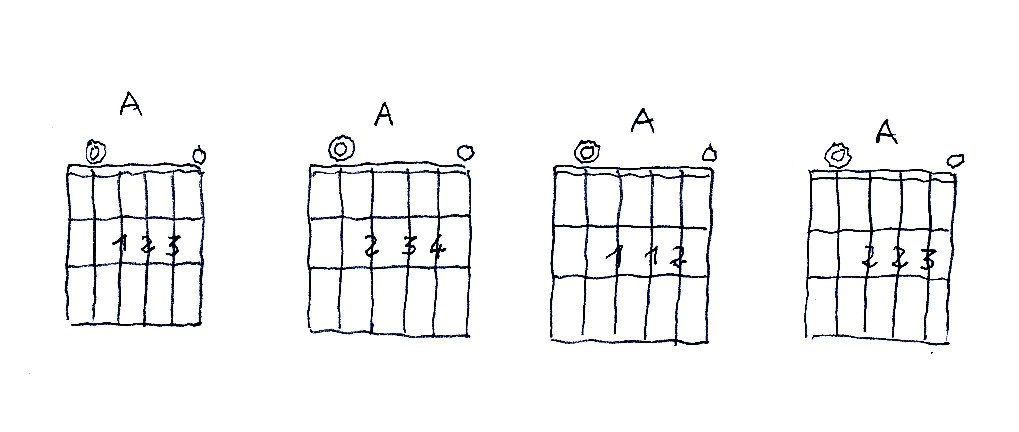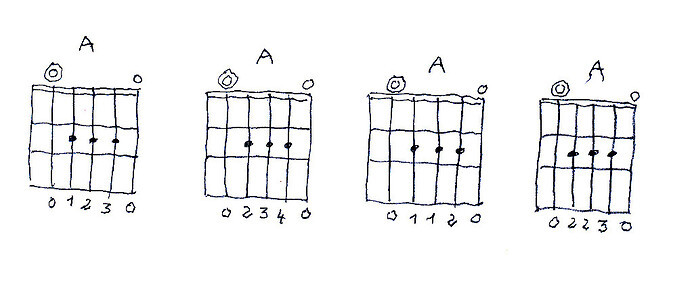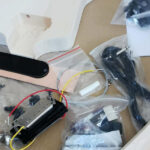Guitar chord diagrams are an essential tool for guitar players of all levels. They visually represent how to play a chord, showing string and fret positions. While the recent updates to guitar chord diagram grids are appreciated, there’s a vital element still missing: explicit Guitar Chord Fingerings. For guitarists, knowing which fingers to use is just as important as knowing where to place them.
The absence of designated fingerings is a significant oversight. Guitar fingerings aren’t merely suggestions; they are integral to efficient playing, smooth transitions, and exploring different voicings of the same chord. Even for seemingly straightforward chords, the choice of fingering can drastically impact playability and musical expression.
Consider the common A major chord, a foundational chord for beginners. Many might assume there’s only one way to play it. However, as illustrated below, there are multiple common guitar chord fingerings for A major, each offering unique advantages and nuances.
 A major chord fingering variation one: Index, Middle, and Ring fingers on 2nd fret.
A major chord fingering variation one: Index, Middle, and Ring fingers on 2nd fret.
This first variation utilizes the 2nd, 3rd, and 4th fingers (middle, ring, and pinky) on the 2nd fret. This is a standard and versatile fingering, allowing for easy transitions to other chords in common progressions.
 A major chord fingering variation two: Index, Middle, and Ring fingers with numbers inside circles.
A major chord fingering variation two: Index, Middle, and Ring fingers with numbers inside circles.
Alternatively, this variation, while visually similar in dot placement, might imply a different fingering approach depending on the context. The numerical indicators within the dots clearly suggest finger assignments, enhancing clarity for learners.
Ideally, chord diagrams should explicitly indicate fingerings, whether through numbers below the diagram or within the dots themselves. Furthermore, highlighting the root note within the diagram would add another layer of valuable information for guitarists understanding chord construction and theory.
In conclusion, while visual representations of chord shapes are helpful, they are incomplete without clear guitar chord fingerings. Incorporating fingerings into chord diagrams is not just a refinement; it’s a necessary addition to make them truly effective and beneficial for guitar players at all stages of their musical journey.

